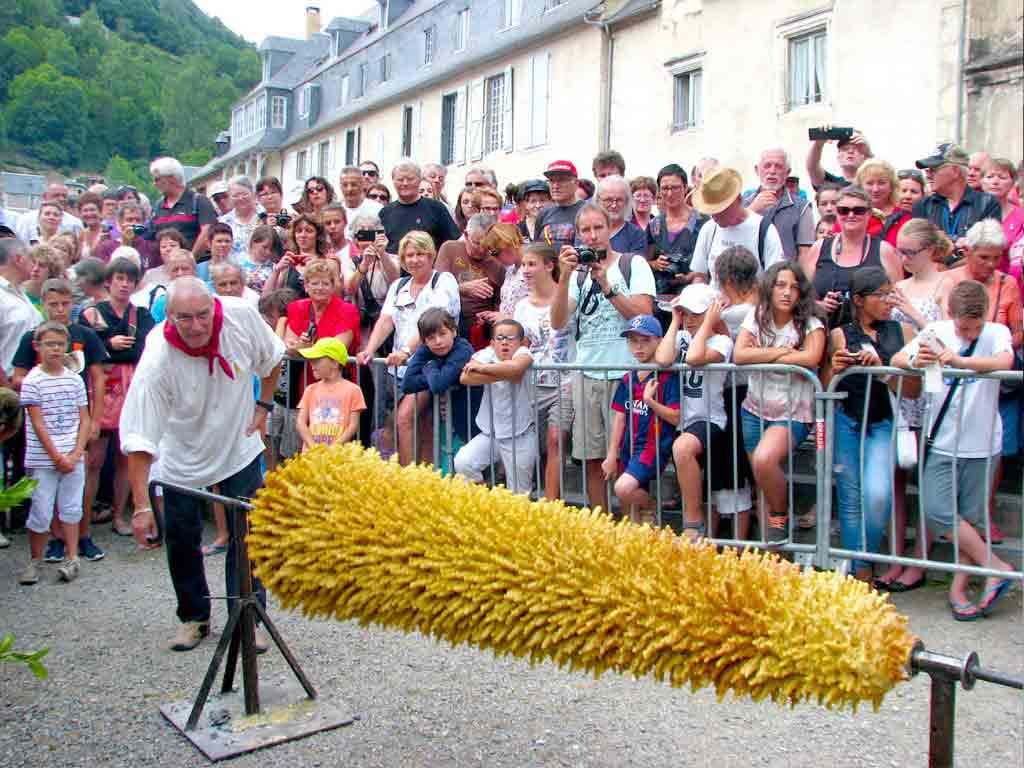
The origins of the spit cake are highly controversial.
One tradition attributes it to the King of Prussia's pastry chef, who created it in Salzwedel in the 1790s.
It is said to have been brought back to France by Napoleon's armies on their return from the Caucasus.
It was immediately adopted by the rural populations of the Pyrenees.
Traditionally prepared on winter evenings, it is above all a festive cake, used to salute the great events of life: weddings and christenings.
The conical shape of the cake, with its “spikes”, is linked to the way it is prepared: liquid dough is poured onto a conical spit, which is turned more or less quickly near a source of heat.
The paste solidifies like a pancake, forming a ring extended by stalactite-like outgrowths around the spit.
The process is repeated several times to build up layer upon layer of cake.
The cake is cut horizontally from top to bottom, revealing the golden rings characteristic of the baking process.
In France, it is found in the Massif Central and the Pyrenees.
The tradition of spit-roasting cakes is particularly widespread in Aveyron.
The Confrérie du Gâteau à la broche, based in Arreau (Hautes-Pyrénées), organizes the annual Fête du gâteau à la broche in July.
Aure Valley Tourist Office
Château des Nestes
65240 Arreau
Tel.: 05 62 98 63 15
http://www.vallee-aure.com
Biscuiterie Védère
423, route de la gare ,
65200 Montgaillard
Tel.: 05 62 91 50 62
www.biscuiterievedere.com
Mon pais gourmand
https://www.monpaisgourmand.fr/
Translated with DeepL.com (free version)




